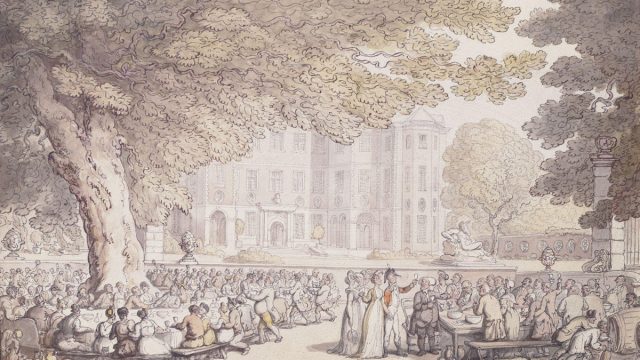The Karun Thakar Fund has awarded a Project Grant to the grassroots collective Samak Bi Lab, in support of their project ‘Collective Visions’. Here, co-founder Julie Fox introduces Samak Bi Lab and their project.
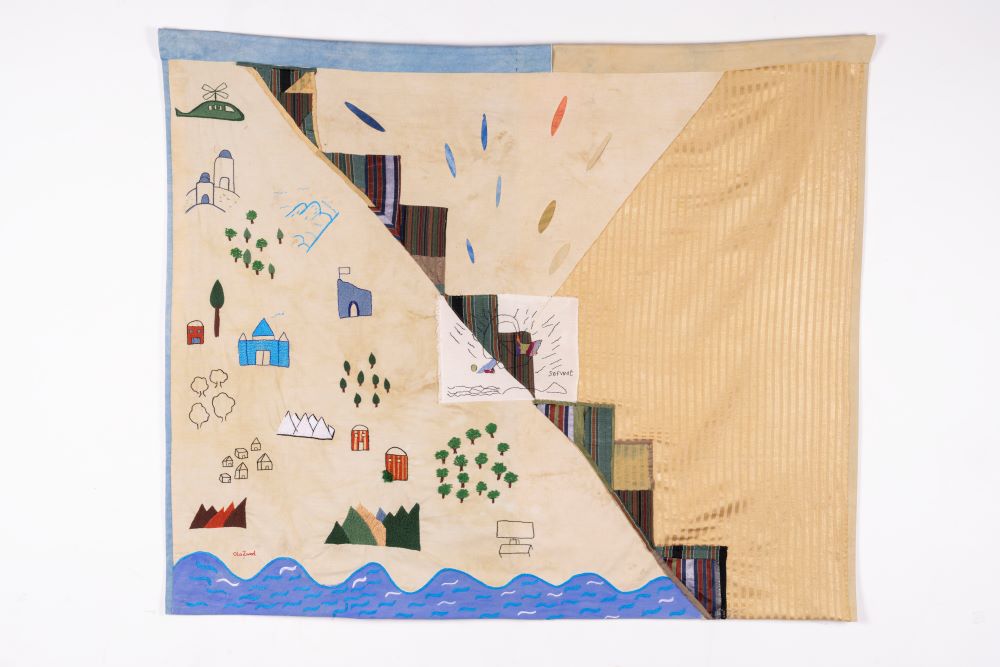
Still attached to their branches, ripe pomegranates burst open across the Jerusalem hills. The rich nectar and skin of these fruits provide the soft yellow colouring of the silks and cottons used to make the tapestry Sofwat. In previous centuries, natural dyes such as pomegranate had a significant role in Palestinian culture as tools of self-expression; dress, textiles and embroidery provided sites for the geographical mapping of identity through colour. For example, blue textiles were the product of the indigo plants which grew in the salty earth around the Dead Sea, and which were harvested, fermented, crushed, and powdered to create dye. Once upon a time, those clothed in deep blue garments could be recognised as inhabitants of the cities that surround the sea, like Jericho or Hebron.
Traditional dresses, called thobe, likewise told stories of landscape and life through stitch. Grapevines, cypress trees, and the moon of Bethlehem are just a few of the motifs employed in traditional embroidery from this region. Alongside hopes and dreams, all that grew in the stepped groves and fields was crossed-stitched onto textiles and dress, part of the ritual customs observed in the creation of every bride’s trousseau.
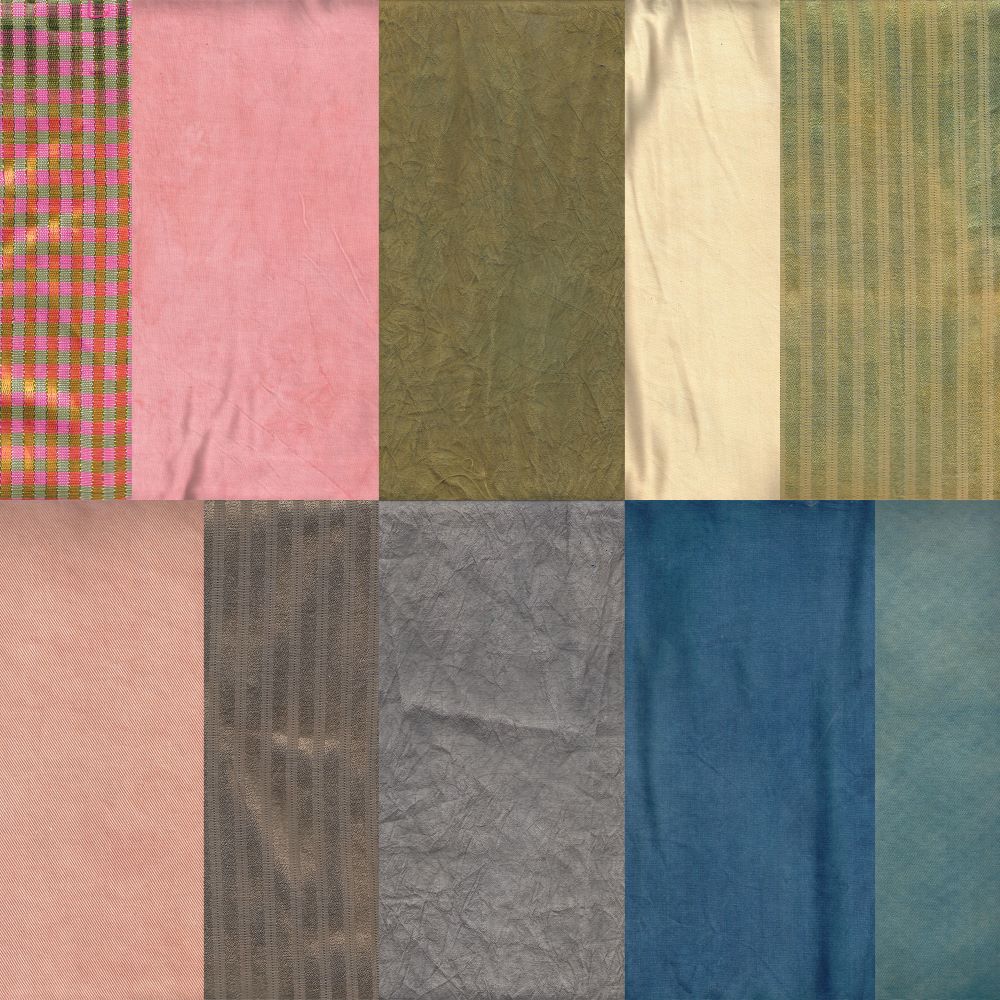
Samak Bi Lab is a multi-national collective that forges integrations between art, design, education, craft and industry. Co-founded by Julie Fox and Eliza Collin, with long-standing input from Muna Ammar, for the past 7 years we have developed an innovative methodology for the production of contemporary artwork rooted in the cultural legacies of Palestine and the Levantine textile industry. Following well-worn paths, we explore histories of regional textile manufacturing and trade and work to revive natural dyeing, weaving and embroidery within a contemporary, internationally-recognised framework. Our aim is to facilitate intergenerational collaboration, thereby supporting the passing on of technical skills and trade crafts while providing community-based education for at-risk youth.
This winter we will run a 12-week series of art classes focusing on two subjects that are inextricably woven into traditional thobe: embroidery and ecology. These classes will be offered at the Tanweer Center, a youth centre in Beit Ummar, a town located in Occupied Palestinian Territory. Alongside studying traditional embroidery, natural dyeing, and visual communication, the curriculum will focus on local ecology, incorporating studies of the landscape, foraging and water-tracking, and the identification of local fauna and flora. The classes will be run in partnership with local agricultural and embroidery experts.
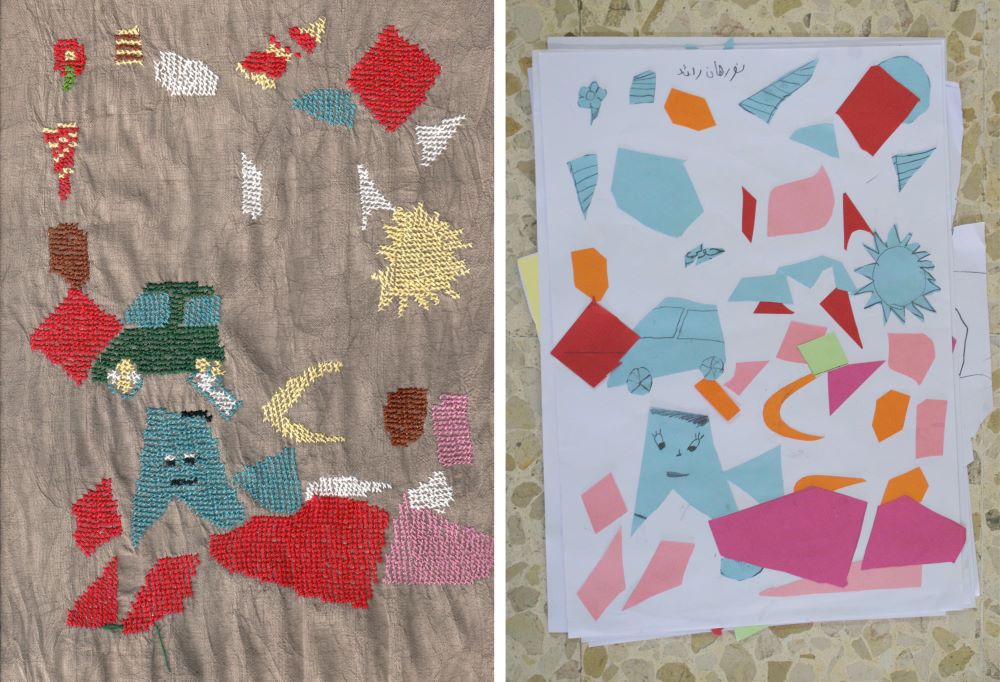
Over the course of the 12 weeks the children will be encouraged to interpret what they learn into drawings and paintings, which will then be cross-stitched by artisans onto locally woven and naturally dyed cloth, creating collaboratively-designed tapestries. Like historic textiles, these artworks are connected to the land by the use of locally-sourced materials and resources; our damask silks and Egyptian cottons are woven in Hebron by third-generation skilled tradesmen and naturally dyed in cooperation with our regional dye partners.
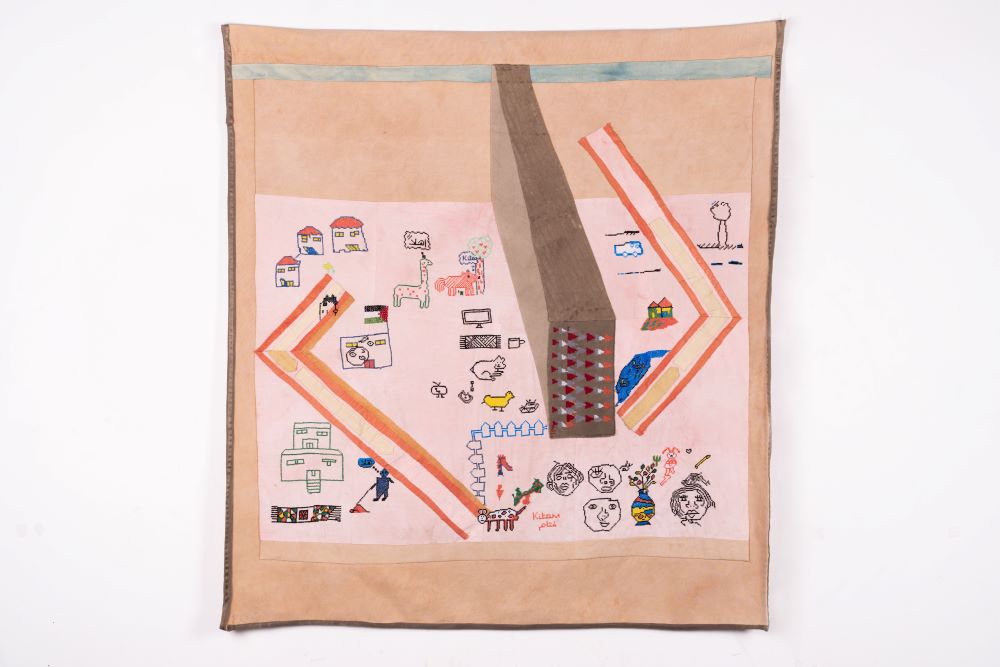
Pyramids, was created via the same methodology earlier this year. Pyramids represents the currents of contemporary life in Beit Ummar, as seen through the eyes of youth and translated by a network of expert hands using locally sourced materials. The rose-coloured denim ground was dyed with a combination of pomegranate and madder. The denim itself, made of 100% Egyptian cotton, was woven in a Hebron factory whose operations have been crippled by conflict, the cost of the electricity, and the publics’ detachment from cotton. The-blue green strip of sky across the top is made of the same denim, dyed with indigo and pomegranate. The grey partition is formed from calico, cotton and striped silk damask dyed with iron and tea. The arrows stitched onto the grey cotton centre are derived from an artwork created by a student at the Tanweer Center and embroidered in 2019. The round roofed houses represent those which have sat nestled in the village for centuries, connecting the ancient past with modern life as portrayed in the children’s art works. Collectively realised, and patched with the past, the tapestry demonstrates the power of community as a foundation for both preservation and exploration.
We are humbled to be selected for a Karun Thakar Fund Project Grant, and it is a great honour for our work to be recognised. Thank you to The Karun Thakar Fund for their generosity and support of our current project, Collective Visions.
Further reading
Dedman, R. (2016). At the seams: A political history of Palestinian embroidery. The Palestinian Museum
Kawar, W. K. (2011). Threads of identity preserving Palestinian costume and Heritage. Rimal Publications.
Voices of Jerusalem: A Textile Merchant in the Old City. metmuseum.org (accessed December 2022)
